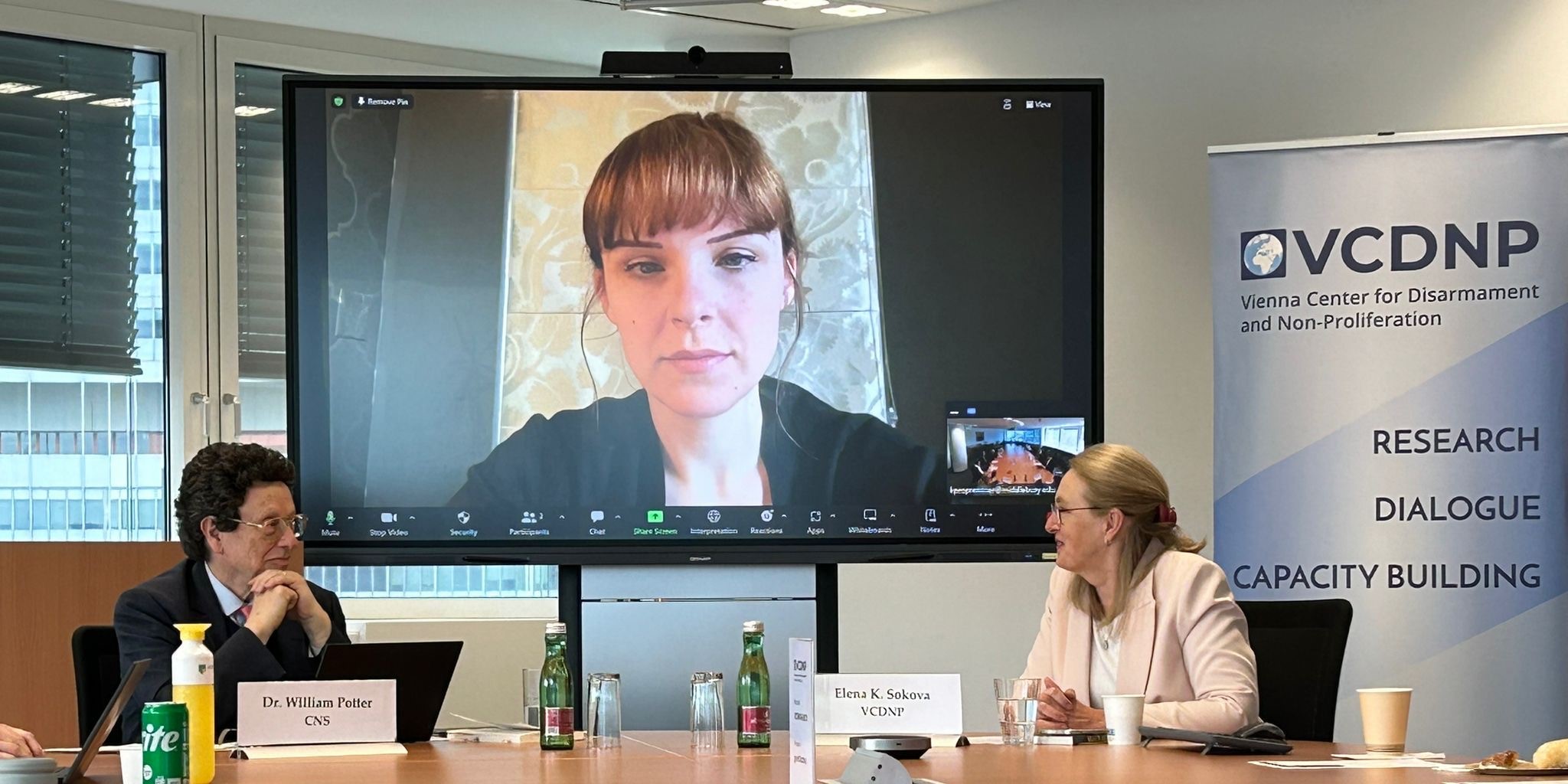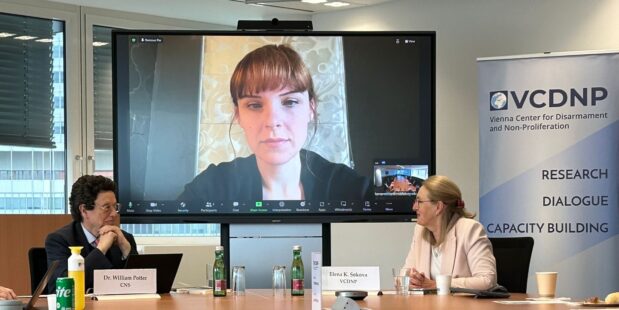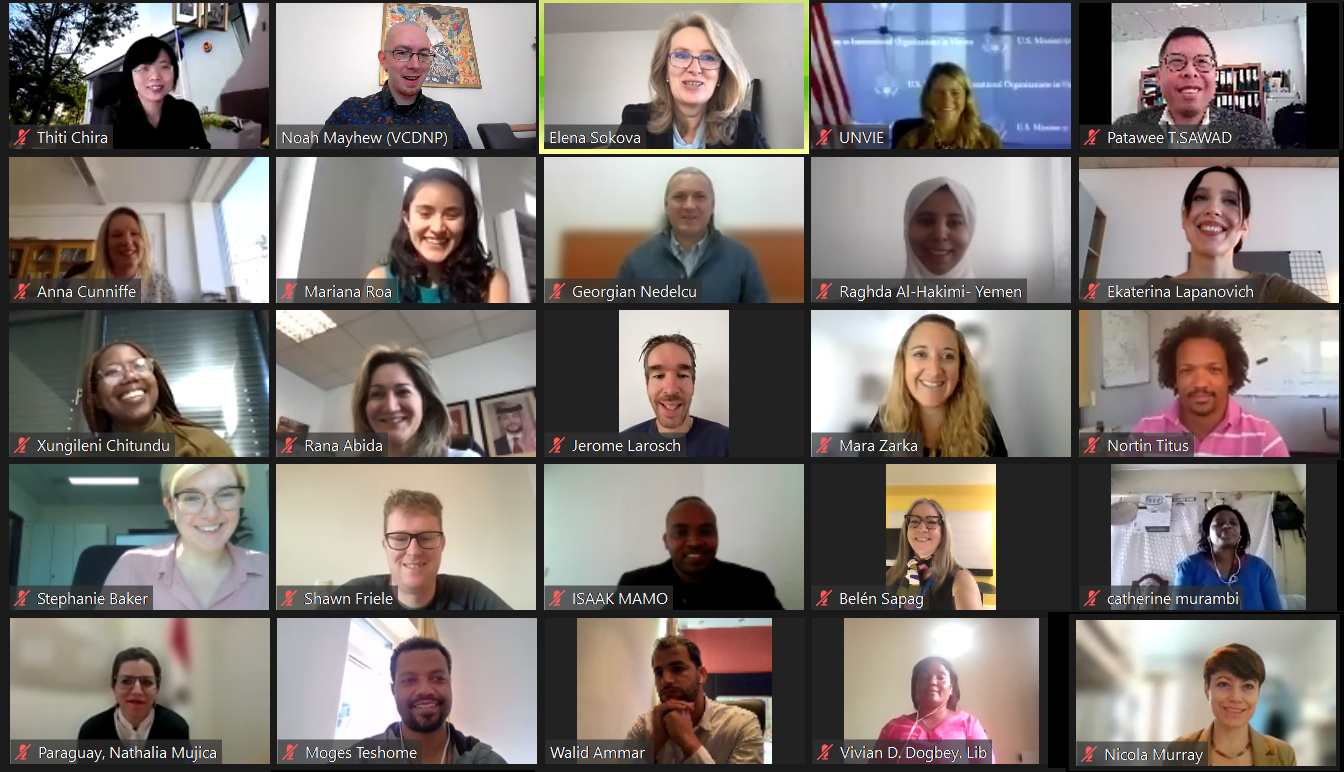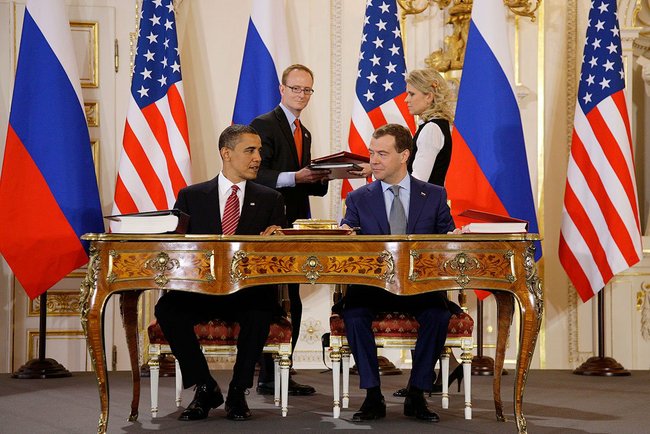
On 12 June 2024, the VCDNP hosted a seminar on the history of the pursuit of radiological weapons by State actors as well as practical, necessary steps to reduce the likelihood of a resurgence of such programmes in the future. There are currently no known ongoing radiological weapons programmes. However, recent attention to potential radiological weapons in the context of the war in Ukraine and a lack of related international regulations raise concern about a resurgence of radiological weapon programmes. The seminar highlighted the necessity of renewed efforts to prevent the development of radiological weapons in the future.

VCDNP Executive Director Elena K. Sokova opened the session by introducing the book Death Dust, the findings of which informed the seminar. These findings were then presented by two of the book’s authors:
Dr. Potter noted that the book’s focus on State actors aims to fill the gap left by the existing research focused on non-State actors. He then touched on the book’s case study on the United States. He explained a noticeable similarity in ideas about radiological weapons between science fiction and classified discussions in the American government. The American programme started before the Second World War and mainly focused on using terrain-contaminating material for area denial tactics and on using radiological dust as a substitute for chemical weapons. The programme began to falter due to a lack of military rationale and political obstacles and was eventually deprioritised in favour of nuclear weapons after 1954.
Dr. Notte elaborated on the Soviet, Iraqi and Egyptian case studies included in the book. In the Soviet Union, interest in radiological weapons was sparked by information about the American programme and initially mainly focused on defensive measures. By the late 1950s, the programme gradually withered away in part due to a lack of military effectiveness compared to chemical weapons, limited resources, and because the United States abandoned its own programme.
Iraq launched its programme in the late 1980s and tested three radiological weapons. Its main goal was the use of area denial tactics during the Iran-Iraq War, and the programme was spearheaded by Saddam Hussein’s son-in-law Hussein Kamel. However, the tests proved unsuccessful. This programme only came to light due to the defection of Kamel to Jordan.
The Egyptian programme was the brainchild of Austrian scientist Otto Joklik, originally employed in Egypt’s missile programme. He foresaw the deployment of artillery shells armed with radioactive isotopes and procured radiological material abroad as a way of competing militarily with Israel. Before this programme made it to the testing phase, Joklik defected to Israel and the programme was abandoned.
Dr. Notte then touched on a few common themes. For example, the rise in interest in radiological weapons was mirrored by their rise in prominence in science fiction, radiological weapons did not deliver on their promises, the programmes ran into difficulties in acquiring the right material and dispersing it properly when in use as a weapon, and priority was often placed on other weapons of mass destruction. Finally, radiological weapons programmes were often highly influenced by specific individuals with an interest in radiological weapons.
Dr. Potter then highlighted the current threat of State-developed radiological weapons. He stated that the Russian invasion of Ukraine increases the chances of radiological weapons being developed; he argued that Russia’s repeated accusations that Ukraine is developing these weapons bring this risk to the front of policymakers’ minds. He explained that a 1979 joint American-Soviet effort to pass a radiological weapons treaty failed, but that a 2023 American UN General Assembly resolution on radiological weapons could provide much-needed impetus to pass effective regulation in this area.
During the following discussion session, the speakers explained that this issue has always been a relevant topic but that interest tends to rise slowly over a long period. However, support for the American draft resolution proves that interest is now increasing. They observed that States and non-State actors have different motivations in looking into radiological weapons and, as such, they must be studied separately. Finally, the possibility for countries to exchange information on non-State radiological weapons threats could be facilitated by the International Atomic Energy Agency and several US-sponsored programmes, but resource limitations and geopolitical tensions are major obstacles.
Dr. Potter concluded the seminar by underscoring the necessity of raising the salience of the need to prevent radiological weapons resurgence and development.


